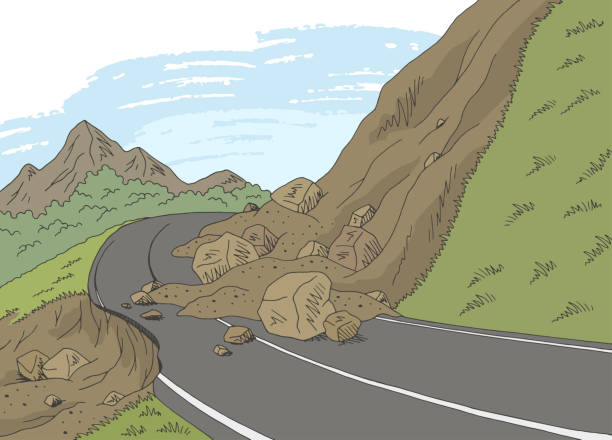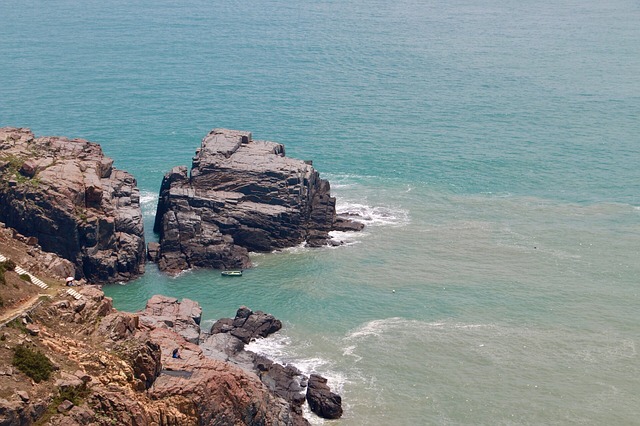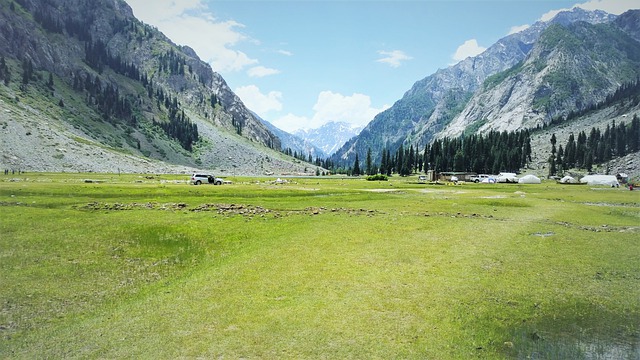INTRODUCTION
When a section of the natural slope cannot hold its own weight a landslide is formed. Soil material on a slope with a slick surface beneath, for example, might get heavy with precipitation and slide down due to its increased weight. It is the movement caused by gravity due to which rock, plants, or dirt moves downward. Landslides can occur in several ways may be a fall, tumble, slide, spread, or flow can all occur. The movement may be extremely slow to very fast. The mass of advancing debris can ruin property along its route and kill humans and cattle. Although landslides are most commonly associated with steep slopes, they can also occur in regions with little relief or slope. Falling rocks and boulders are known as rockfall.
You might also be interested in: Increasing Natural Disasters due to Climate Change
CAUSES OF LANDSLIDES
The main reason for the landslide is the weakness of the composition, material, or structure of rock and may be an external factor, which impacts the groundwater regimes such as heavy rain or changes in groundwater level, etc. Landslides are triggered naturally such as earthquakes and volcanic activities and man-made such as the creation of new sites.
-
Man-made Causes
Human activities are one of the main reasons for landslides such as construction without proper engineering, Improper farming practices, deforestation, etc. These activities can increase slope gradient or make significant changes in surface and groundwater regimes.
-
Natural Variables
Natural ways are also responsible for the landslides such as extreme rainfall, and snowfall that will make a rise in groundwater. Water levels fluctuate due to the tidal action lowering water levels in rivers and reservoirs. The continuous water flows over the slop cause erosion.
Also check out: Impacts Of Changing Monsoon Season Rains Pattern In Pakistan
-
Factor Combination
Natural factors can occur instantaneously such as may a landslide is triggered by an earthquake which in result dam a valley causing upstream floods and the dam to fail.
EFFECTS OF LANDSLIDES
-
The Impact On Fish Populations
All wild species are vulnerable to habitat damage and loss. Fish are likely to be the most affected since they rely on stream access and water quality for survival, both of which are frequently impacted in the short term by landslides.
-
Impact on Human and Animal Lives
Landslides have the potential to kill or hurt people and animals. The rolling mass might bury persons and animals beneath debris.
-
Effect On Water Quality
Landslides can harm or destroy the ecosystem. The impact may remain for thousands of years. They may contaminate streams and bodies of water with debris and silt. It severely affects water quality and marine life.
-
Effect On Agriculture
Destruction of agricultural land is one of the damaging effects of landslides. The debris formed after landslides spread over farms, cultivation, and pastures, covering important agricultural land. They can destroy seeds, plants, food stocks, and grazing land. These areas might be unavailable for years, affecting farmers’ livelihoods.
Also check out: Sustainable Agriculture Practices and their Advantages
-
Economic Losses:
As things stand, economic losses from these dangers have been growing over the last few decades. This is mostly due to increased investment and development in landslide-prone areas. Landslide expenses, in general, also include direct and indirect losses.
SOLUTIONS TO PREVENT LANDSLIDES
-
Change The Slope’s Gradient:
This may be accomplished by removing components from the slope’s top and repositioning them at the bottom, hence lowering the slope’s gradient. Rather than doing it all on your own, get expert assistance to avoid any more geohazards.
-
Afforestation:
Make sure before the arrival of wet season no stumps, tree roots, or vegetation on the hill. Afforestation is a way that may aid the removal of landslides because the roots of the tree retain the soil in place, minimizing soil erosion.
Also check out: Deforestation – Causes, Effects, and Solutions
-
Removing Loose or Heavy Material From The Slope’s Top:
Rocks, fallen trees, and other debris at the top of a slope might cause a landslide on your property. Clean off all the slopes on your property to eliminate any loose debris. Remove this debris from the slope.
-
Construct Sheds Or Other Structures Away From The Edge:
Keep a new shed or similar structure away from the edge of a slope if you’re building one. Before you begin constructing, don’t forget to consult with an expert to determine the safe distance from the slope.
CONCLUSION
Briefly, Landslides have a particular impact on the Earth’s natural ecosystem. Landslides frequently have a detrimental impact on forests, grasslands, and animals, with forest and fish habitats being the most readily damaged or destroyed. We can prevent landslides through afforestation, removal of the stuff from the slop’s top etc.
Also Check out: What is a Healthy Environment? Why is it important?
I hope you all liked this post! Please comment below if you have any suggestions, comments, or feedback! We at #envpk love hearing from our readers! Thanks!




